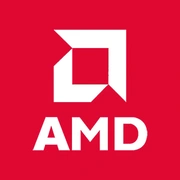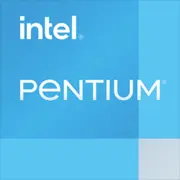AMD A8-7600 vs Intel Pentium G3450
CPU Comparison Result
Below are the results of a comparison of
AMD A8-7600
and
Intel Pentium G3450
processors based on key performance characteristics, as well as power consumption and much more.
Advantages
- More Total Cores: 4 (4 vs 2)
- Higher Max Turbo Frequency: up to 3.8 GHz (up to 3.8 GHz vs N/A)
- Newer PCI Express Version: Gen 3, 16 Lanes (CPU only) (Gen 3, 16 Lanes (CPU only) vs Gen 3)
- Newer Launch Date: July 2014 (July 2014 vs May 2014)
- Higher Technology: 22 nm (28 nm vs 22 nm)
Basic
AMD
Label Name
Intel
July 2014
Launch Date
May 2014
Desktop
Platform
Desktop
A8-7600
Model Name
?
The Intel processor number is just one of several factors - along with processor brand, system configurations, and system-level benchmarks - to be considered when choosing the right processor for your computing needs.
Pentium G3450
Kaveri
Code Name
Haswell
A8 (Kaveri)
Generation
Pentium (Haswell)
CPU Specifications
4
Total Cores
?
Cores is a hardware term that describes the number of independent central processing units in a single computing component (die or chip).
2
4
Total Threads
?
Where applicable, Intel® Hyper-Threading Technology is only available on Performance-cores.
2
3.1 GHz
Basic Frequency
3.3 GHz
up to 3.8 GHz
Max Turbo Frequency
?
Max Turbo Frequency is the maximum single-core frequency at which the processor is capable of operating using Intel® Turbo Boost Technology and, if present, Intel® Turbo Boost Max Technology 3.0 and Intel® Thermal Velocity Boost. Frequency is typically measured in gigahertz (GHz), or billion cycles per second.
N/A
256 KB
L1 Cache
64 KB (per core)
4 MB
L2 Cache
256 KB (per core)
-
L3 Cache
3 MB (shared)
Yes
Multiplier Unlocked
No
AMD Socket FM2+
CPU Socket
?
The socket is the component that provides the mechanical and electrical connections between the processor and motherboard.
Intel Socket 1150
100 MHz
Bus Frequency
100 MHz
31.0x
Multiplier
33.0x
28 nm
Technology
?
Lithography refers to the semiconductor technology used to manufacture an integrated circuit, and is reported in nanometer (nm), indicative of the size of features built on the semiconductor.
22 nm
65 W
TDP
54 W
90°C
Max. Operating Temperature
?
Junction Temperature is the maximum temperature allowed at the processor die.
-
Gen 3, 16 Lanes (CPU only)
PCI Express Version
?
PCI Express Revision is the supported version of the PCI Express standard. Peripheral Component Interconnect Express (or PCIe) is a high-speed serial computer expansion bus standard for attaching hardware devices to a computer. The different PCI Express versions support different data rates.
Gen 3
2,411 million
Transistors
1,400 million
Memory Specifications
DDR3
Memory Type
?
Intel® processors come in four different types: Single Channel, Dual Channel, Triple Channel, and Flex Mode. Maximum supported memory speed may be lower when populating multiple DIMMs per channel on products that support multiple memory channels.
DDR3
Dual-channel
Memory Channels
?
The number of memory channels refers to the bandwidth operation for real world application.
Dual-channel
No
ECC Memory
No
GPU Specifications
Radeon R7
Integrated Graphics Model
?
An integrated GPU refers to the graphics core that is integrated into the CPU processor. Leveraging the processor's powerful computational capabilities and intelligent power efficiency management, it delivers outstanding graphics performance and a smooth application experience at a lower power consumption.
Intel HD (Haswell)
Benchmarks
Geekbench 6 Single Core
A8-7600
436
Pentium G3450
591
+36%
Geekbench 6 Multi Core
A8-7600
1056
+6%
Pentium G3450
1000
Geekbench 5 Single Core
A8-7600
503
Pentium G3450
755
+50%
Geekbench 5 Multi Core
A8-7600
1429
+1%
Pentium G3450
1417
Passmark CPU Single Core
A8-7600
1452
Pentium G3450
1891
+30%
Passmark CPU Multi Core
A8-7600
3231
+49%
Pentium G3450
2167


